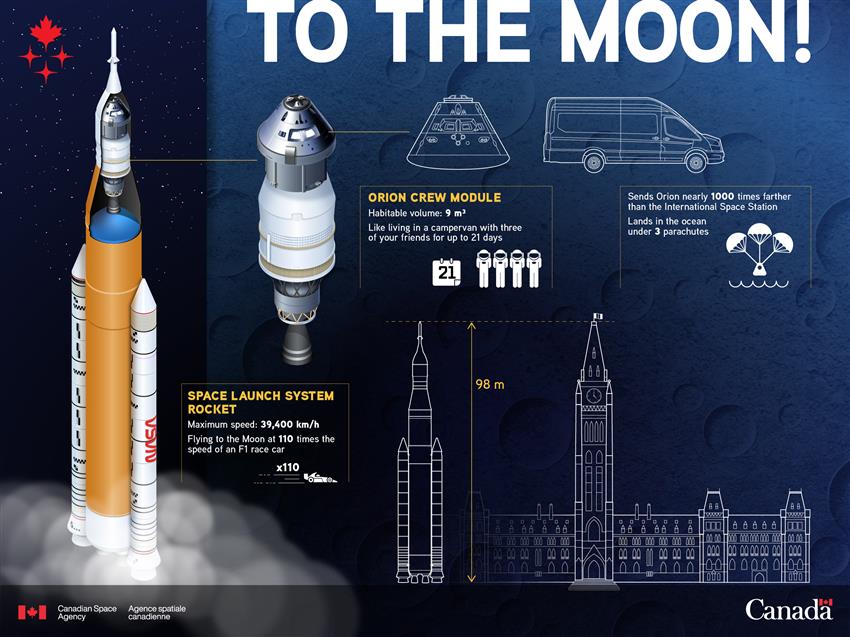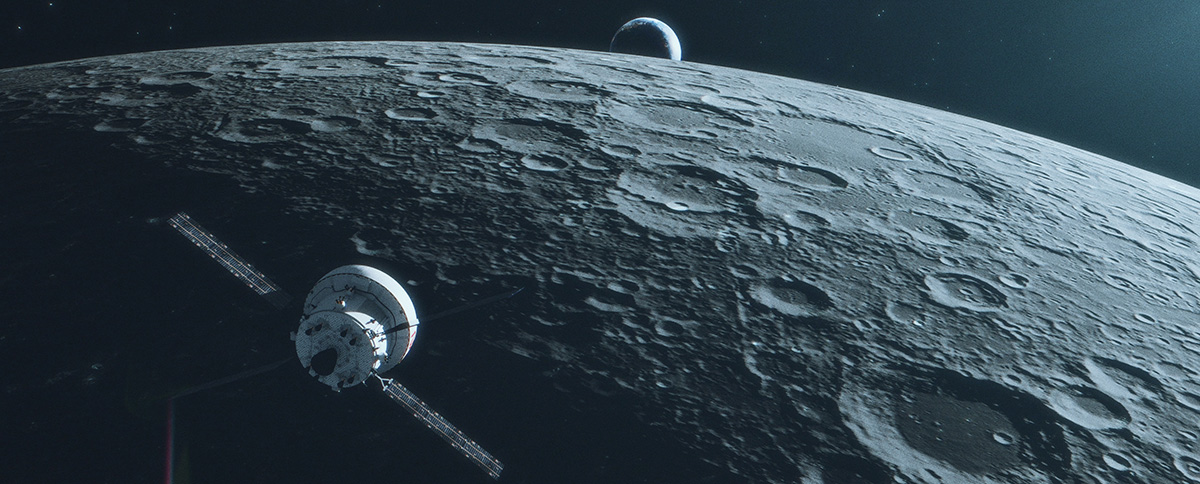Our ride to the Moon
Learn about the rocket and spacecraft that will bring humans to the Moon for the first time in over 50 years.
The rocket
NASA's Space Launch System (SLS) is among the most powerful rockets in the world. The SLS holds over 2.7 million litres of liquid hydrogen and liquid oxygen. It will produce 15 percent more thrust (the force that pushes the rocket) than the Saturn V rocket that brought astronauts to the Moon during the Apollo missions.
The SLS can be configured in many ways to increase payload volume and power, allowing more cargo to be sent farther than ever before.
The spacecraft
Orion is a new spacecraft that will carry Artemis astronauts to space. It will be launched by the SLS rocket. Orion includes:
- Crew Module, where the crew will live and work during Artemis missions. The Crew Module can accommodate four astronauts, and its interior is about as big as a small camper van.
- European Service Module, which will carry air, nitrogen, and water for the crew, as well as in-space propulsion and power systems.

Text version - To the Moon! – Infographic
Infographic showing the SLS rocket and Orion Crew Module. (Credit: Canadian Space Agency)
The journey
The Artemis I mission (no crew) lasted 25,5 days. During that time, the Orion spacecraft travelled thousands of kilometres beyond the Moon. It used the gravity forces of Earth and the Moon to help propel itself – a little bit like a slingshot. Check out the video Artemis I mission: Orion's journey around the Moon and the infographic Artemis I: Orion's uncrewed flight around the Moon to learn more about Orion's trajectory and journey.
Where will the mission launch from?
The SLS rocket carrying the Orion spacecraft launches from NASA's Kennedy Space Center in Florida, in the United States.
Where will the mission land?
The Crew Module detaches from the rest of the Orion spacecraft to land in the Pacific Ocean under three parachutes.
Animation from the launch to the landing of the capsule in the Pacific Ocean. (Credits: Canadian Space Agency, NASA MSFC/SLS)
